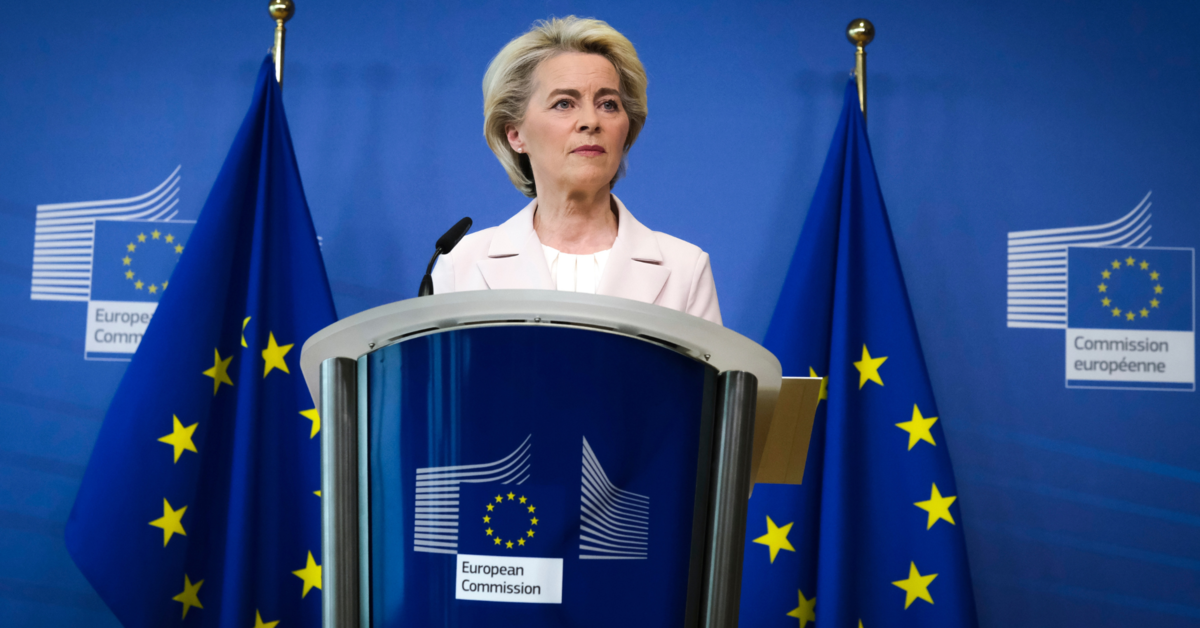At a Glance
The EU’s Green Deal Industrial Plan, published on February 1, 2023, aims to enhance and protect European industrial competitiveness and manufacturing capacity throughout its transition to climate neutrality in order to deliver prosperity.
- The Plan – seen as the EU response to some key initiatives from Europe’s biggest partners to seize net-zero industrial opportunities – will incentivize and support decarbonization and innovation through the EU’s already existing multibillion euro subsidy scheme.
- It has sparked mixed reactions across the entire European political, industrial and associations spectrum, which all expressed very divergent views on its application and purpose. They criticized the Plan for arriving too late or for lacking clarity over new funding opportunities for the industry to transition successfully.
- The initiative will be discussed in the coming weeks and months, and a full-fledged proposal is expected to be released around mid-March 2023.
The European Commission published on February 1, 2023 the Green Deal Industrial Plan (GDIP) to provide a framework for the transformation of the EU’s industry for the net-zero age. The Plan aims to enhance and protect European industrial competitiveness and manufacturing capacity throughout its transition to climate neutrality in order to deliver prosperity. The Plan relies on the strengths of the EU internal market and is based on the idea that a green transition can strengthen competitiveness. The Industrial Plan is based on four pillars:
- a predictable and simplified regulatory environment
- faster access to sufficient funding
- enhanced skills
- open trade for resilient supply chains
It is nonetheless presented as an additional framework to the Circular Economy Action Plan (CEAP) but does not include measures specifically designed to promote, fund and/or incentivize circular solutions.
It is important to understand that among the different initiatives already published, the European Green Deal establishes the EU’s green transition ambitions. This includes climate targets towards carbon neutrality by 2050, as well as the Fit for 55 package, which provides a concrete plan to achieve those aims, and the REPowerEU Plan, which accelerates the move away from fossil fuels. In parallel, the GDIP, alongside the CEAP, enables a more supportive environment for the scaling up of European manufacturing capacity for the net-zero technologies and products required to meet the climate targets.
Lastly, the proposal comes in the midst of some key initiatives from Europe’s biggest partners to seize net-zero industrial opportunities. The United States’ Inflation Reduction Act (IRA) will mobilize over USD 360 billion by 2032 (EUR 330 billion) and Japan's green transformation plans aim to raise up to JPY 20 trillion (EUR 140 billion).
Expected Timeline
The Industrial Plan, announced by President von der Leyen in her address at the World Economic Forum in Davos in January 2023, responds to the European Council’s request for the Commission to mobilize all relevant EU-wide and national tools to improve the EU’s resilience and competitiveness as well as conditions for investments. During the Special European Council on February 9–10, EU heads of state discussed the plan and supported its development to ensure the bloc’s long-term competitiveness, prosperity and role on the global stage. EU leaders are then expected to reconsider the issue at their next summit scheduled on March 23–24, after the final proposal will have been published by the EU Commission. Once published, the file will undergo the ordinary legislative procedure.
Key Stakeholders’ Reactions
Upon its release, the Industrial Plan sparked mixed reactions across the entire European political, industrial and associations spectrum:
- Political parties broadly welcomed the plan but expressed divergent views on its application and purpose. The European People’s Party (EPP), the Renew Europe Group and the Greens welcomed the proposal but, respectively, expressed regrets that it did not come earlier, hope that it will manage to boost the EU’s industry competitiveness, and hope that it will help Europe stay fit for the zero-emissions era. The three political groups also called for massive investments in renewable energies and the need to ensure the unity of the EU internal market. The Socialists and Democrats (S&D) instead criticized the plan saying it simply falls short of what is needed and fails, for example, to match the ambition of the USA’s IRA or force companies to respect workers’ rights.
- EU member states such as France widely welcomed the initiative saying it goes in the “right direction” to promote “Made in Europe” industries, though a more precise financial framework will be needed.
- On the companies’ side, BusinessEurope welcomed the plan to address the EU’s worsening competitiveness but urged policymakers to create a regulatory breathing space for companies to survive during crises, bearing in mind foreign initiatives such as the IRA.
- NGOs such as the European Environmental Bureau (EEB) labelled the plan as a mere aid scheme for industry rather than a comprehensive plan for a sustainable industry. The German Renewable Energy Federation (BEE) called on its side for clear specifications and measures for market access and emphasized the need for fresh funding for European projects.
Concluding Remarks
While the industry recognizes the need for decarbonization, the cost and technical challenges of implementing decarbonization solutions remain a significant barrier and a threat to its competitiveness and viability. Political parties have expressed mixed feelings over the initiative, mentioning that the proposed plan either arrives too late or lacks clarity over new funding opportunities for the industry to transition successfully. Overall, the Green Deal Industrial Plan is being proposed not only to incentivize and support decarbonization and innovation, but also to help European industry cope with the long-lasting effects of geopolitical, geo-economic and geo-health challenges of past years through the EU’s already existing multibillion euro subsidy scheme. The Plan nevertheless seems to be rather linear, emphasizing only energy security (batteries, electricity production, hydrogen) and critical raw materials.
Comparing the EU’s Plan with the USA and Japan
|
|
EU GDIP |
US IRA |
Japan GTB |
|
Release Date & Status[1] |
February 1, 2023 |
August 16, 2022 |
To be issued in 2023 |
|
Timeline |
Currently no timeline |
2022–2029[2] |
2024–2032[3] |
|
Total Funds |
USD 288 billion (EUR 270 billion) |
USD 360 billion |
USD 140 billion (JPY 20 trillion yen) |
|
Targets |
EU-based companies in strategic industries, clean and green energy, and technologies |
US-based companies, small businesses, innovative startups and industries in clean energy, rural development, and automotive sector |
Fossil-fuel importers, oil wholesalers, utilities, and trading houses[4] |
|
Eligibility & Accessibility |
EU Member States, accessible to businesses and consumers |
EU Member States, accessible to businesses and consumers |
Businesses, small-medium sized firms, accessible to businesses and consumers |
[1] Signed into law as of (date).
[2] Affordable Care Act program will be extended for three years, through 2025.
[3] N.B. The average duration of government bond issuance estimated for next fiscal year is eight years and one month.
[4] They are expected to set emissions quotas for themselves, and the government will tighten regulations later.



